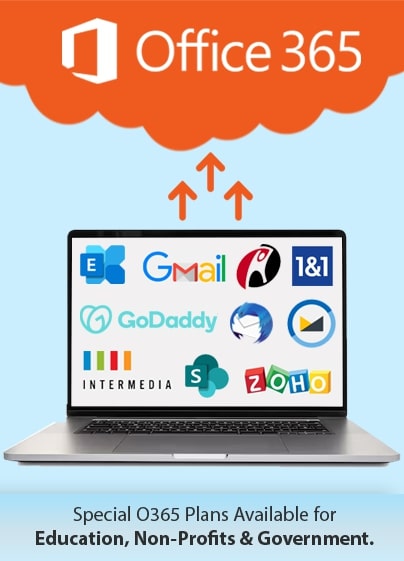Office 365, a cloud subscription platform from Microsoft, is heading towards the same kind of dominance that
Microsoft Office has enjoyed for decades, because it offers some of the most successful business applications
from Microsoft, well-integrated and universally accessible; available standalone or in bundled packages; directly
or from a Cloud Solution Provider at a reasonable price.
In today’s world, moving to the Cloud is the best thing that can happen to your business, for increasing its productivity and profitability. And among all things Cloud, Office 365 is unarguably the No.1 business application today. So, it is quite natural that you should be considering a move to Office 365. As you go about trying to understand Office 365 in all its entirety, there would be one question that you are bound to have, sooner than later – between Microsoft, your own IT team, and the Microsoft Cloud Solution Provider, who does what exactly and how? So here it goes.
Role of Microsoft
Office 365 products are sold by Microsoft under monthly or annual subscription-based plans. The data in all your Office 365 accounts resides on Microsoft servers. Software updates and data backups are done directly by Microsoft. In terms of migration, Microsoft has put up a detailed official list of what is expected in your existing source environment for onboarding: you will have to get the same organized and kept ready to start the onboarding.
As for support services, Microsoft’s technical support is largely in the form of documentation and self-support, which includes troubleshooting online tools and videos, help articles and videos, as well as forums and wikis in the Office 365 community. Other service requests have to be submitted online to Microsoft – only by the authorized administrator, as specified during the time of the sale. The end-users cannot directly contact Microsoft for day-to-day technical support.
There is no commitment for phone support response time from Microsoft for your issues, even if they fall under high or medium severity, as deemed by Microsoft. As and when the response happens, for Office 365 Business products, it will be limited to business hours. Only if your issue gets a severity level ‘A’ assigned by Microsoft after checking against its own official issues list, it gets considered as ‘critical’. You will then be entitled to a within one-hour response for phone support. Otherwise Microsoft support is generally through web/email responses.
Role of Your Own IT Team
Before, during, and after procuring Office 365, your own IT will need to be fully involved in quite a few things that will be demanding in terms of time and resources. The foremost role they will be playing is that of IT help desk to attend to the end-user issues. Besides, they also will have to provide and organize comprehensive deployment and migration support for the transition to Office 365 go smoothly. They will have to configure the various services and applications to customize and meet your business needs.
They will also need to customize SharePoint Online and manage other related services such as Skype for Business online conferencing so that you can fully utilize and benefit from the various components of Office 365 that you paid for. Your own internal IT team will also have to handhold and train your users by solving their day-to-day issues at work so that work doesn’t get held up and they are also able to get the most out of Office 365. Then there are the administrative tasks like resetting passwords and creating new user accounts.
Role of a Cloud Solution Provider
A Microsoft Cloud Solution Provider makes moving to Office 365 simple and painless. To begin with, an expert team at the Cloud Solution Provider would help you with the migration, as an end-to-end, managed service. Once your business has moved on to Office 365, the technical support team would be available 24 x 7 x 375 directly to all your end-users on phone, live chat, and email. The Microsoft Cloud Solution Provider would take upon himself the burden of everything that your own IT team will otherwise have to do – creating accounts, configuring, integrating, customizing, syncing, managing permissions, set-ups, and a lot more, as explained earlier. The CSP effectively frees up your IT team to focus your core business needs and contribute better.
Becoming a Cloud Solution Provider is a “by invitation only” privilege from Microsoft. As there are quite a few out there, if you happen to ask the difference between us and the other Cloud Solution Providers, we have a straight answer – we offer our migration and end-user support to you absolutely free. We do not charge anything extra on Microsoft’s direct prices. And we are backed by a decade of experience in handling over 200,000 Microsoft clients across 50+ countries.
And that’s the simplest way of explaining what sets us apart as a Microsoft Cloud Solution Provider.
